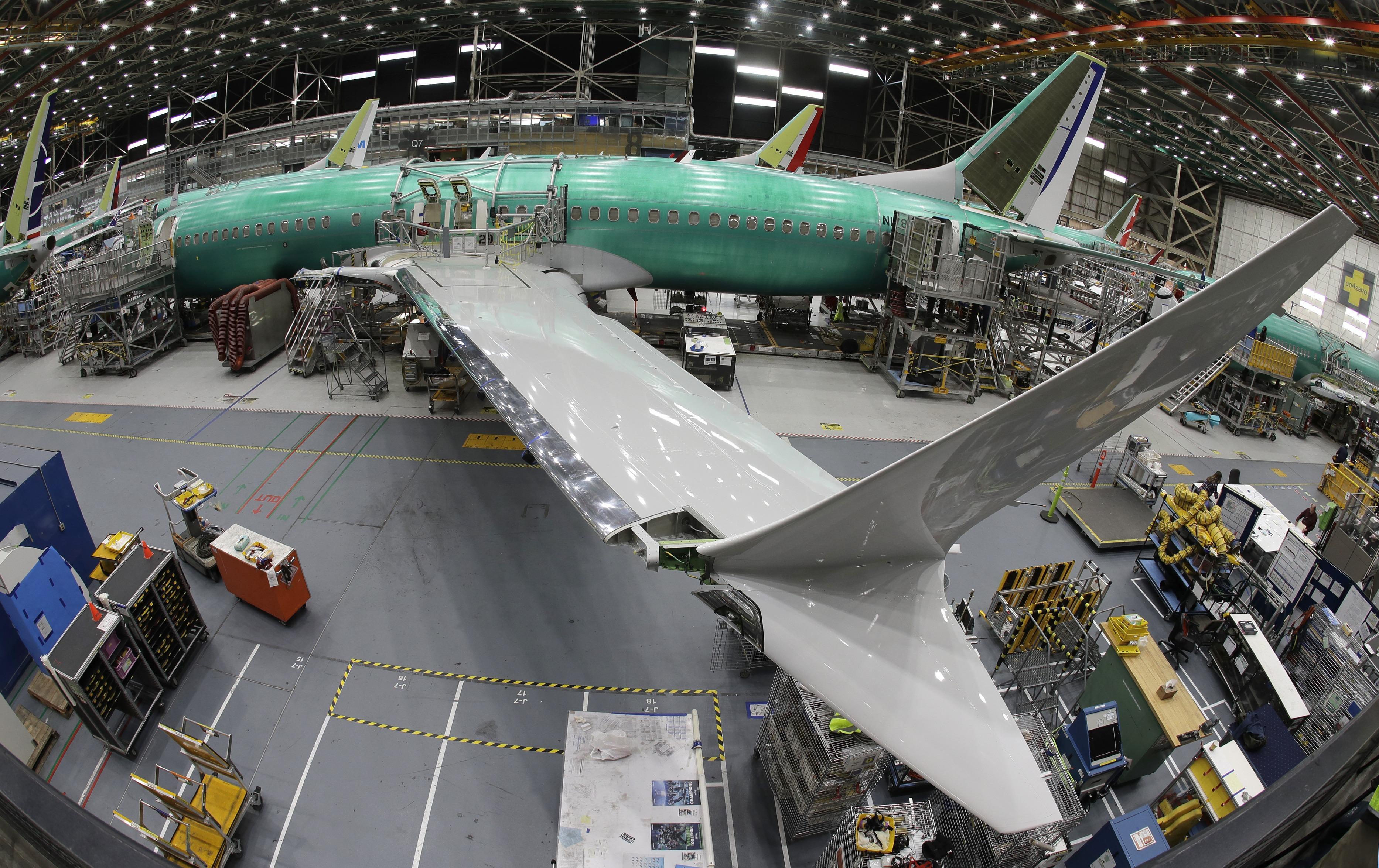 In this photo taken with a fish-eye lens, a Boeing 737 MAX 8 airplane sits on the assembly line during a brief media tour in Boeing's 737 assembly facility in Renton, Washington, March 27, 2019. (PHOTO / AP)
In this photo taken with a fish-eye lens, a Boeing 737 MAX 8 airplane sits on the assembly line during a brief media tour in Boeing's 737 assembly facility in Renton, Washington, March 27, 2019. (PHOTO / AP)
WASHINGTON - The Federal Aviation Administration said the agency's 737 MAX production audit into Boeing and supplier Spirit AeroSystems found multiple instances where the companies allegedly failed to comply with manufacturing quality control requirements.
The FAA also said it found "non-compliance issues in Boeing’s manufacturing process control, parts handling and storage, and product control." The FAA has not detailed the specific corrective actions Boeing and Spirit must take but sent summary of its findings to the companies in its completed audit.
ALSO READ: Boeing 737 MAX program head out at planemaker
Spirit AeroSystems, which makes the fuselage for the MAX, said it is "in communication with Boeing and the FAA on appropriate corrective actions."
Boeing said in response "by virtue of our quality stand-downs, the FAA audit findings and the recent expert review panel report, we have a clear picture of what needs to be done."
Boeing confirmed on Friday it is in talks to buy Spirit AeroSystems, a former subsidiary which it spun off in 2005.
In 2021, Boeing paid a $6.6 million fine to the FAA as part of a settlement over quality and safety-oversight lapses going back years
The FAA's audit was prompted by a Jan 5 mid-air emergency involving a new Alaska Airlines 737 MAX 9 that lost a door plug at 4,877 meters. The FAA previously barred Boeing from expanding 737 production and in January said "the quality assurance issues we have seen are unacceptable."
Last week, FAA Administrator Mike Whitaker said Boeing must develop a comprehensive plan to address "systemic quality-control issues" within 90 days following an all-day Feb 27 meeting with CEO Dave Calhoun.
"Boeing must commit to real and profound improvements,” Whitaker said last week. "We are going to hold them accountable every step of the way, with mutually understood milestones and expectations."
READ MORE: United flight makes emergency landing due to wing damage
Calhoun said in a statement last week that Boeing's leadership team was "totally committed" to addressing FAA concerns and developing the plan.
Whitaker told Reuters in January the goal of the audit was "to look at the system, look at how the inspections are done, where they're done, how the interaction is with the suppliers, how the handoff happens, just the whole process to really understand how it works and where the faults might be."
Boeing has scrambled to explain and strengthen safety procedures since the mid-air incident that led to the FAA grounding the MAX 9 for several weeks in January.
Whitaker said Boeing's plan must incorporate results of the FAA production-line audit and findings from an expert review panel report released last week.
One key issue in the investigation into the incident is determining what manufacturing documents were used to authorize the opening and closing of the door plug during work on the plane.
READ MORE: Alaska jet probe: Boeing plane door plug bolts seemed missing
Boeing last month abruptly removed Ed Clark, the head of its 737 MAX program, as part of a management shakeup.
Earlier, a bipartisan group of lawmakers asked the FAA if it had found "any evidence of persistent quality control lapses in any of Boeing's production lines."
The FAA has been critical of a series of Boeing quality lapses over the years. In 2021, Boeing paid a $6.6 million fine to the FAA as part of a settlement over quality and safety-oversight lapses going back years.
In December, the FAA urged airlines to inspect MAX planes for loose bolts in the rudder control system after an airline discovered a bolt with a missing nut while performing routine maintenance.
The door panel that flew off the MAX 9 appeared to be missing four key bolts, according to a preliminary report last month from the US National Safety Transportation Board.


